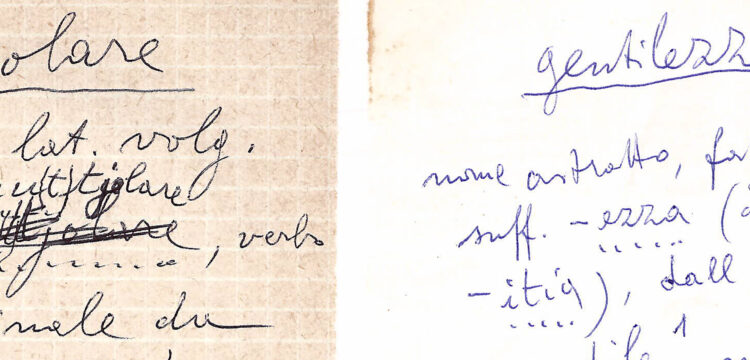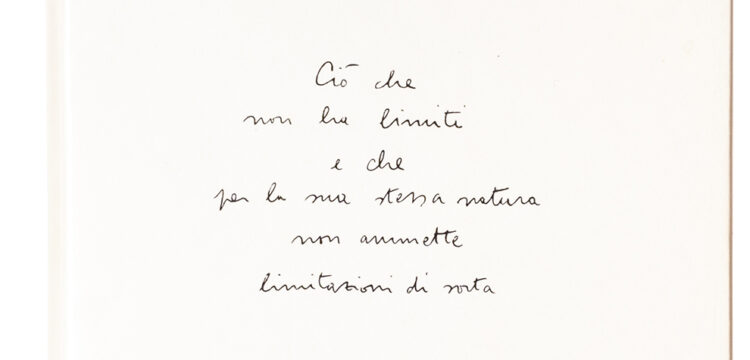Drawing by Writing
…or Gesturing by Marking?
The gesture precedes the word. It is our first instrument for relating to the world, the original medium through which the body expresses itself, communicates, makes itself understood. In its immediacy, the gesture holds a poetic and political power that destabilizes the hierarchies of verbal language, opening up to forms of expression that do not pass through the voice or alphabetic writing, but which are no less complex, layered, and profound for that.
Sign language—often relegated to the margins of phonocentric cultures—is not merely an alternative means of communication: it is a full-fledged linguistic system, complete with grammar, syntax, and nuances. It is an embodied language, constructed through relationships between bodies, in space, in the gaze. Its very existence challenges the idea of communicative normalcy based on spoken words and invites us to think of disability not as a lack, but as an opening. An opening toward other modes of perception, relation, and meaning-making.
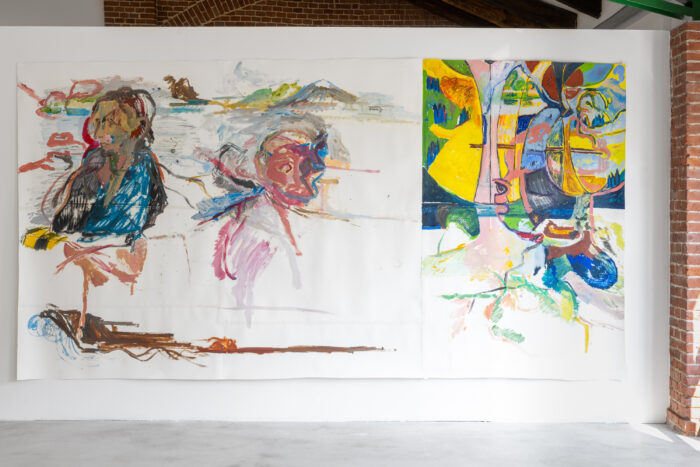
To recognize and valorize the sign and the gesture means to broaden the field of what is sayable and hearable. It means creating space for voices that speak through the hands, for subjectivities that express themselves through movement, for imaginaries that cannot be contained by dominant linguistic forms. In a time when verbal language is increasingly saturated, automatic, and performative, the return to gesture—to the sign traced in space or on the landscape—reminds us that communication is, above all, a sensitive, creative, radically human act.
The exhibitions Gesto e segno, curated by Simona Squadrito, and Scrivere Disegnando, curated by Andrea Bellini and Sarah Lombardi, intersect in a deep and stimulating dialogue around the idea of the body and the sign as territories of artistic, political, and existential exploration. They offer two complementary perspectives on gesture and writing, on the materiality and the transgression of language. If the former explores gesture as embodied action, as corporeal experience and living trace of presence in the world, the latter delves into writing as a gesture that seeks its other dimension—that which escapes codes, opening up to madness, marginality, and creative chaos.
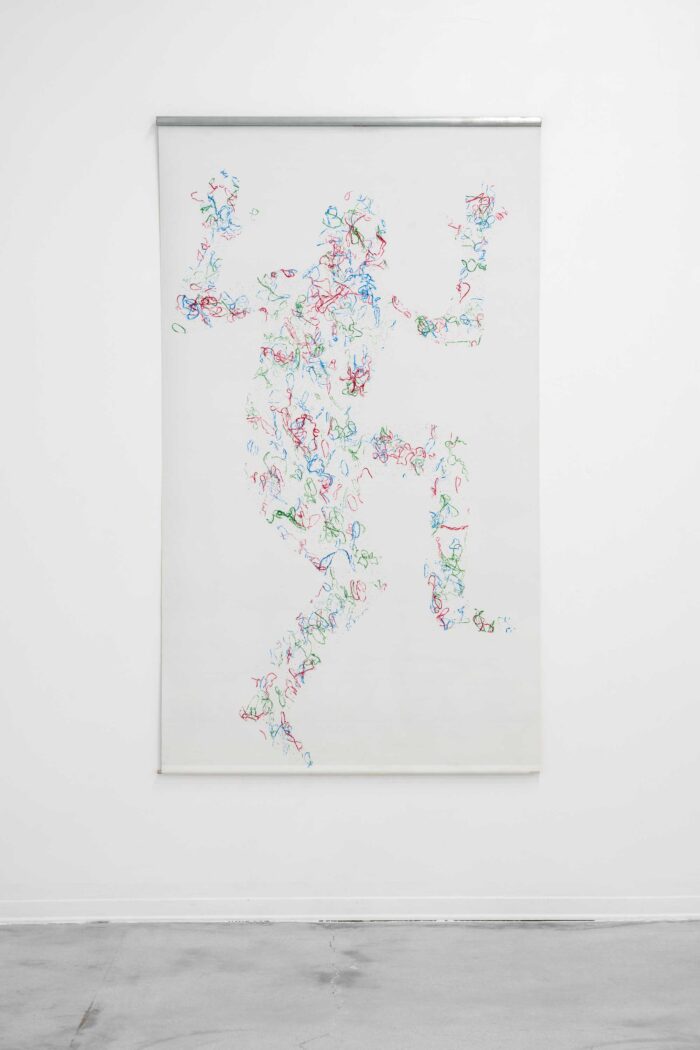
Jacques Derrida’s reflections on writing and the trace as foundational elements of human experience and difference are crucial here. In his seminal Of Grammatology, Derrida argues that writing is more than a mere transcription of spoken discourse: it is a gesture that produces difference, deviation, and openness—a sign that never reduces to a fixed and stable meaning but always points beyond itself. Writing, then, is not simply a communicative tool but a performative act that creates meaning within a dimension of ambiguity and inexhaustible potential. This idea underlies the experimental works presented in these two curatorial projects, where the gesture of writing becomes drawing, trace, visual and bodily sign that challenges linguistic hierarchies and boundaries, disrupting systems of control and normativity.
One might also draw from Maurice Merleau-Ponty’s thought, whose phenomenology of the body radically transformed our understanding of gesture and perception. For Merleau-Ponty, the body is not just one object among others, but the original subject through which the world is experienced—a field of intentionality and meaning that precedes and grounds every act of knowledge and communication. The gesture, in its lived concreteness, is an act that unites body, mind, and world in an inseparable relationship—a primary language that precedes and conditions verbal language. This perspective is fundamental to understanding how the gesture in writing and drawing is not merely mechanical motion but an act charged with meaning and relations, engaging bodily presence, memory, emotion, and political tension.
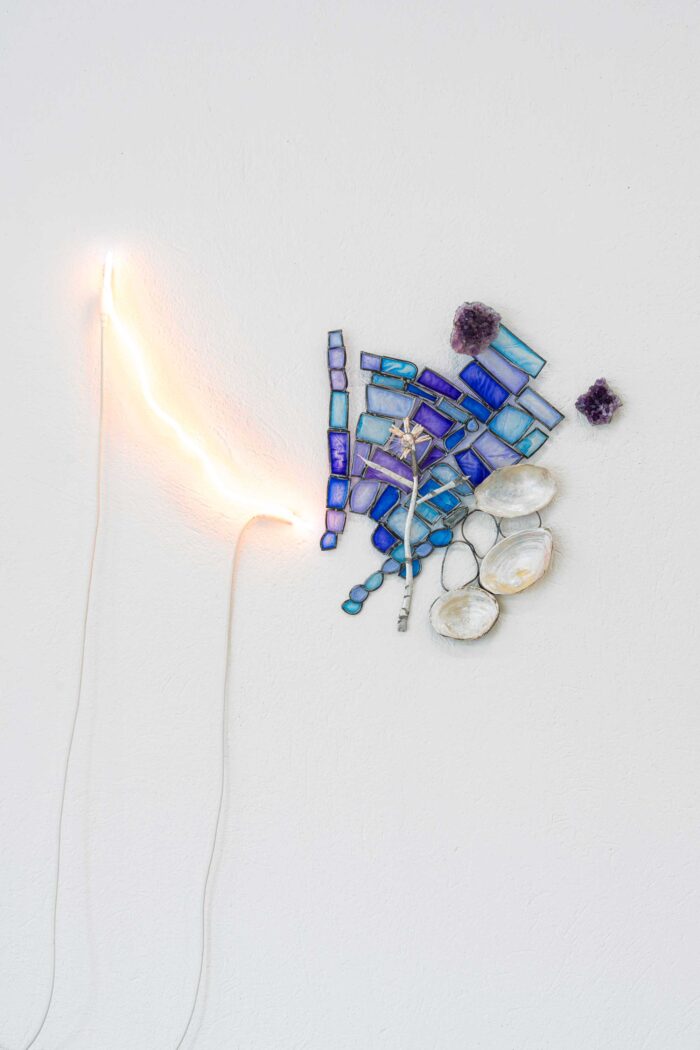
In this sense, Scrivere Disegnando is not merely an exhibition of visual works, but an exploration of the gesture as a site of intersection between body and word, between perception and meaning, between subjectivity and otherness. The dialogue between sign and writing, gesture and word, finds in this exhibition fertile ground for experimentation and reflection, closely aligned with Gesto e segno’s focus on physicality, bodily presence, and the urgency of gesture as a form of communication and testimony.
Both projects confront the tension between control and freedom, norm and transgression, the defined and the undefined, offering viewers an immersive experience that invites them to rethink the very boundaries of art, language, and subjectivity. In this confrontation, gesture and writing are no longer merely expressive tools but become modes of being in the world, practices of resistance, care, and transformation—mapping trajectories that pass through the history of the avant-garde but also project forcefully into the present and future of contemporary art.
Word and sign: a pair that has obsessed twentieth-century philosophy, linguistics, and semiotics alike, and which has exerted a profound and persistent presence in the visual arts. Here, writing manifests as a porous and elusive phenomenon—method, medium, gesture, signifier and signified—in a continuous slippage between form and meaning. It is precisely in this historical moment, when languages are dematerialized and recoded through new technologies—from artificial intelligence to memes, from Gen Z’s social interfaces to the predictive language of algorithms—that the Centre d’Art Contemporain in Geneva, in collaboration with the Collection de l’Art Brut in Lausanne, presents the exhibition Scrivere Disegnando. When Language Seeks Its Other. A title that at first seems to evoke a discussion of writing as a system to be deciphered, but which in fact overturns every expectation. The true protagonist—or antagonist—is that Other: the irreducible, the unreadable, the out-of-format.
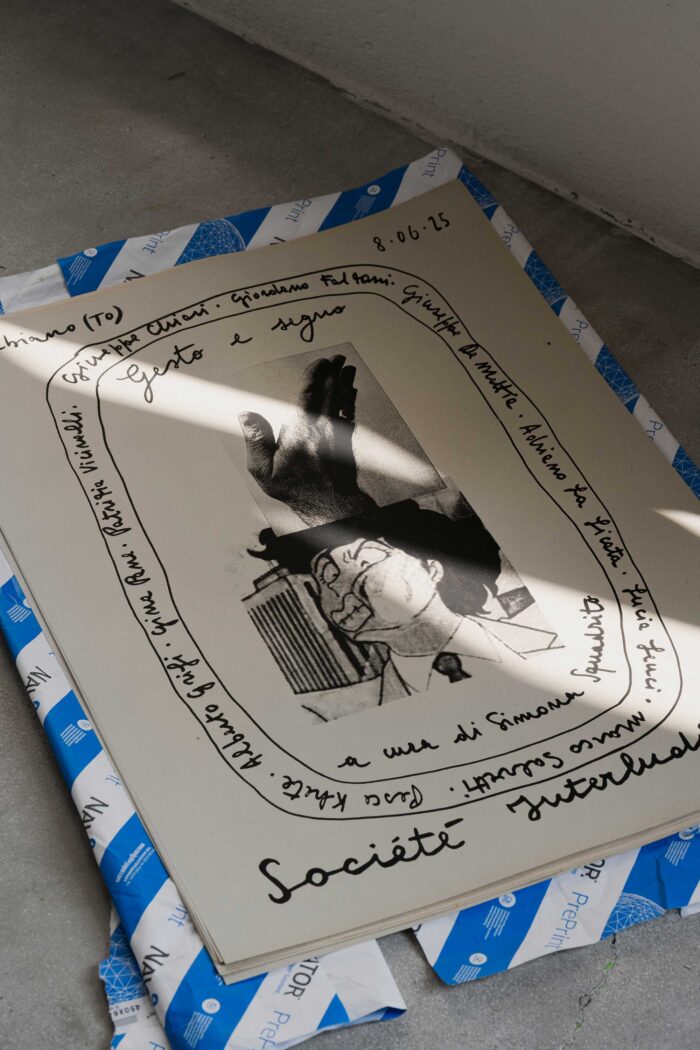
The exhibition brings together 93 artists and over three hundred works, without any pretense of synthesis or homogeneity. It is not a systematic reflection on writing, but rather a journey through its extreme margins—where writing becomes graphic matter, obsessive gesture, personal code, expression of the incommunicable. In this exhibition—which Andrea Bellini defines as “fractal,” where homothety becomes the sign itself—writing acts as a device of disintegration, a form that does not aim to signify but to exist. The goal is not to read, but to see: to grasp what Roland Barthes called “the opacity, the shadow side, the symbolic, secret, and most existential dimension of writing.” Not by chance, Barthes suggested the term scripture (scrizione) to distinguish the graphic gesture from semantic intention: significance, more than meaning.
In this “no-man’s land” unfold Bruno Munari’s Scritture illeggibili di un popolo sconosciuto (1975), Luca Maria Patella’s (gramatica dis-solvente) (1974), Enzo Patti’s Lettera a Mirella Bentivoglio (1986). Also featured are Irma Blank’s Eigenschriften, Spazio 52 (1970), Dichtung Version IV (1974), hdjt ljr (2001)—formally akin to Michael Dave’s Untitled(1996, 2002), the asemic writings of Tchello d’Barros, the inks of Betty Danon, the micro-ornamental modules of Greta Schödl, the pictographic visions of Barbara Suckfüll. The works are not organized chronologically but arranged as a rhizomatic architecture: each sign refers to another, each fragment challenges the logic of order.
It is no surprise, then, that among the exhibited works is Jenna Sutela’s nimiia cétiï (2018), documenting the interactions between a neural network, audio recordings of a supposed Martian language, and footage of space bacteria. The piece evokes an archetypal scene of non-sovereign science fiction: the encounter with the alien. In Close Encounters of the Third Kind (Spielberg, 1977), communication occurs via a musical sequence (the famous five notes by John Williams); in Arrival (Villeneuve, 2016), Louise Banks (Amy Adams) deciphers the gaseous ideograms of the heptapods, recognizing in them palindromic phrases and premonitory visions. Similarly, in the Geneva exhibition, the alien language—the other language—manifests not so much as a code to be translated, but as a trauma to be traversed.
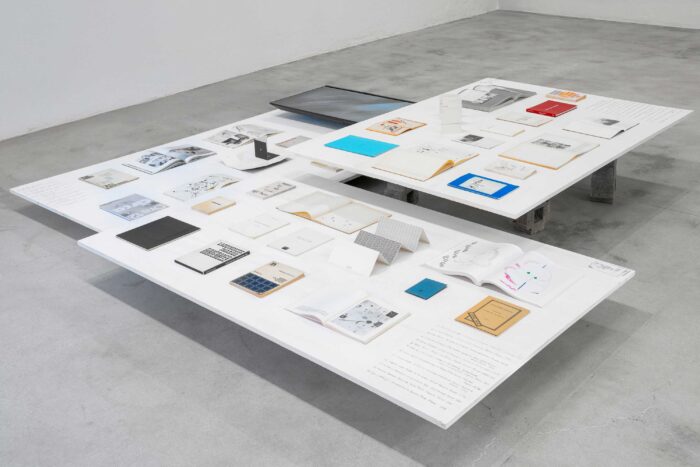
This tension between the desire for communication and the impossibility of understanding runs through the real-life stories of figures such as Hélène Smith, a 19th-century Geneva medium who claimed to write in “Martian, Ultra-Martian, and Uranian”; or Justine Python, a Swiss peasant woman institutionalized in the 1930s, who wrote letters without spaces or punctuation to a court that would not recognize her. Or Emma Hauck, confined for “early dementia” in the Wiesloch asylum, who for ten years wrote incessantly to her husband, repeating “herzensschatzi komm” on sheets completely saturated with writing. None of these letters was ever sent.
It is here that Scrivere Disegnando performs a decisive shift: it is no longer merely an art exhibition but becomes an archive of linguistic unease. Thanks to the collaboration with the Collection de l’Art Brut—shown here for the first time alongside well-known names such as Munari, Gysin, Novelli, Boetti, Baruchello, Paolini, Griffa—the boundary between “authorized” art and “brut” art dissolves. Where should we place the micrograms of Robert Walser, a now-venerated author who died in an asylum? Or the visionary drawings of Henri Michaux? After Foucault, we can no longer think of “madness” as an absolute category—nor of art as separate from symptom.
It is no coincidence that many of the most radical works are by women: Irma Blank, Maria Lai, Dadamaino, Tomaso Binga, Chiara Fumai (who “translates” Carla Lonzi), and younger artists like Mariangela Guatteri, Laura Cingolani, Martina Stella. The gesture of writing—and drawing—becomes here a form of resistance, the construction of an exclusive, often mute but not silent code. Steffani Jemison, an African American artist, evokes the secret languages of Black people deported to the Americas, while Marco Giovenale explores the limits of language through asemic writing.
The “limit” the exhibition puts into question, ultimately, is the one implicit in its title: where does writing end, and where does drawing begin? Or vice versa? Scripture, according to Barthes, is what precedes and exceeds meaning: it is gesture, body, trace. Perhaps it is there that we will encounter the Other—and who’s to say it has seven tentacles?
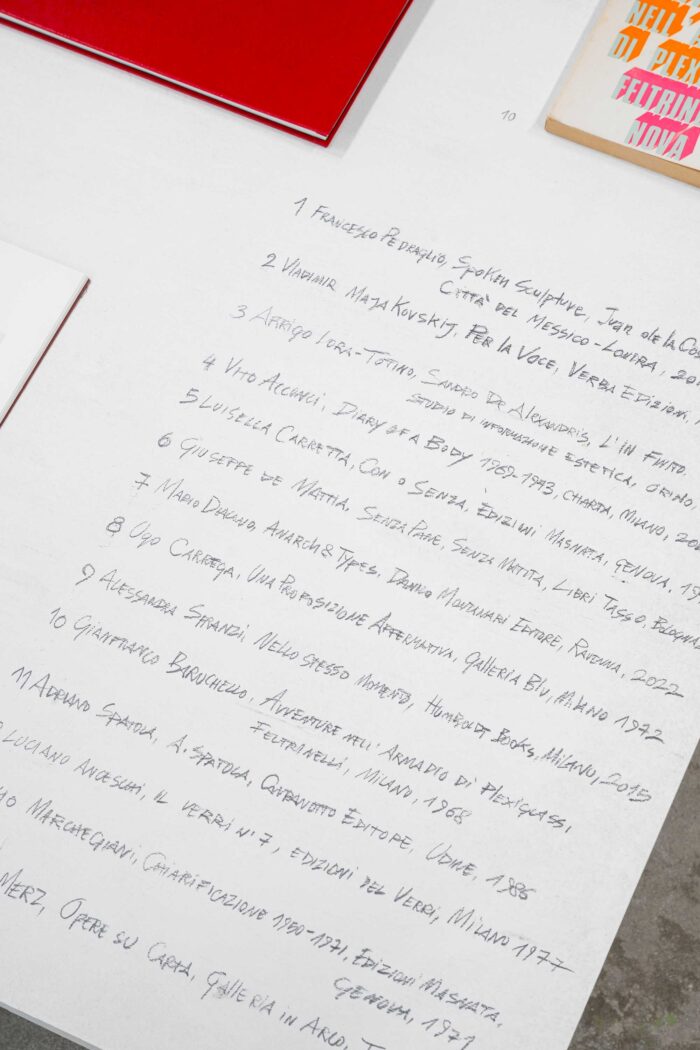
The exhibition Gesto e segno opens with a simple yet dense work: a folded white sheet bearing Giuseppe Chiari’s unfinished phrase, “Devo compiere un gesto di…” This suspended statement becomes the fulcrum from which a rigorous and multifaceted investigation unfolds, questioning the meaning and function of gesture and sign in contemporary art. Chiari’s phrase is less a starting point than an invitation to reflect on the need to act and to leave a trace—on the urgency of defining an act that is both individual expression and public sharing. The exhibition presents itself as a visual and performative manifesto exploring the artistic gesture in all its forms: physical, emotional, political, playful, poetic, and aesthetic. This plurality of meanings underscores how gesture, despite its apparent immediacy, is a complex phenomenon that unfolds between intention and chance, between body and language, between subjectivity and collective dimension. At the center of the reflection is the body, considered not merely a vehicle but an agent and creator of meaning. The gesture manifests first and foremost as a spontaneous, uncodified act, rooted in sensory experience and emotion, capable of replacing or amplifying verbal language. From this perspective, the body becomes both subject and object of communication—a living memory, a site of tensions, contradictions, and resistances. This aspect emerges powerfully in several of the exhibition’s most significant works. In Ago by Lucia Leuci, the gesture of sewing is not merely a manual exercise but a symbolic act that mends material and immaterial fractures. The golden thread that runs through the bronze needle creates a bridge between margins—a web of care and reconnection that evokes the need to reweave a social and human fabric. This gesture of “re-knotting” is ideally linked to the act of walking, represented in Calpestio e pozzanghera, a work unfolding on a grid of cobblestones. Here, the cracked asphalt becomes a metaphor for the wounded city—urban and social fractures that demand attention and recognition. Walking becomes a form of writing the body onto the landscape, a trace impressed in time and space, an act of presence that leaves a concrete and symbolic mark. The temporal dimension of gesture is masterfully expressed in Alberto Grifi’s film Il viaggio con Patrizia, an intimate and poetic diary long left unpublished. The images dwell on the body of Patrizia Vicinelli in a state of suspension that transcends linear time, revealing a complex and inaccessible affective relationship. In this dilated space, gesture becomes poetic language: Vicinelli’s voice, broken into word fragments, turns into bodily sound—living matter that opens up to a listening beyond rationality. Here, gesture becomes word, but a word that resists full understanding, eluding codification and evoking the evocative and indeterminate power of phonetic poetry. Equally central is the political and social value of gesture. In Azione sentimentale, Gina Pane inscribes on her own body a mark that evokes religious martyrdom and the symbolic violence inflicted on women by patriarchy. The rose, initially appearing as an ornament, is transformed into a weapon—a symbol of a struggle that is both physical and symbolic. The performance becomes a gesture of resistance, protest, and liberation—a mark engraved in flesh that reclaims identity and presence in the world. This connection between gesture and political commitment appears in many other works in the exhibition, where the body becomes a tool of communication and existential affirmation. The gesture of love can also be one of violence; the sign can be a fragment of conflict and struggle; and art becomes a terrain for exploring these ambivalences. Painting plays a crucial role in the exhibition’s trajectory, representing a natural destination for the sign understood as an instinctive and distinctive trace. The works of Pesce Khete and Marco Salvetti engage in dialogue on this terrain, probing the tensions between sign, color, and painterly gesture. For Khete, drawing is a daily practice that unfolds like a musical score, with rhythmic marks and disruptions of linear boundaries—a process oscillating between automatism and intentionality that gives rise to a continuously evolving visual language. Salvetti, by contrast, proposes deliberately off-kilter marks, blurred contours, and decisive, almost violent gestures—an allegory of painting as a battlefield between construction and collapse. His question “What is painting?” becomes a path of excavation and recomposition, an existential metaphor that moves through inner storms without losing creative momentum. The exhibition also opens up to playfulness and performance, as in the works of Adriano La Licata, who transforms rubber bands flung at a surface into visual traces—stamps of action and memory. The childlike gesture of play becomes a meditative and tautological act, laden with ambiguity between violence and concentration, action and reflection. The physicality of the body transfers into the object, turning a simple game into a complex artistic act. Giordano Falzoni, with his “farfo universe,” multiplies colors into symmetrical figures reminiscent of Rorschach blots, transforming them into emblems of metamorphosis and multiplication—symbols of a fluid, ever-evolving reality. Giuseppe De Mattia’s work introduces another important element: the relationship between sign and word, between gesture and writing. In Senza pane senza matita (Without Bread Without Pencil), the impossibility of drawing leads the artist to use a burnt slice of bread as both instrument and subject of the drawing—a primordial and tautological gesture that transforms an ordinary object into an aesthetic and poetic tool. The bread becomes a metaphor for nourishment transformed into sign, emphasizing the dialectic between bodily need and artistic production. This connection to writing deepens in the project Made in Germany, where De Mattia collects unconscious marks left by customers testing pens at the “Casa della Penna” shop in Bologna. These graphic curls become autonomous drawings, evoking the history of orthographic signs and reviving their poetic and plastic dimension. To close the exhibition path, a selection of books from the REPLICA archive expands the reflection to the entire history of the avant-garde and artistic practices linked to gesture and sign, weaving together performativity, visual poetry, and verbo-visual experimentation. In this way, the exhibition constructs an atlas of the possibilities of the artistic gesture—from the most intimate and performative dimension to the most theoretical and documentary.


